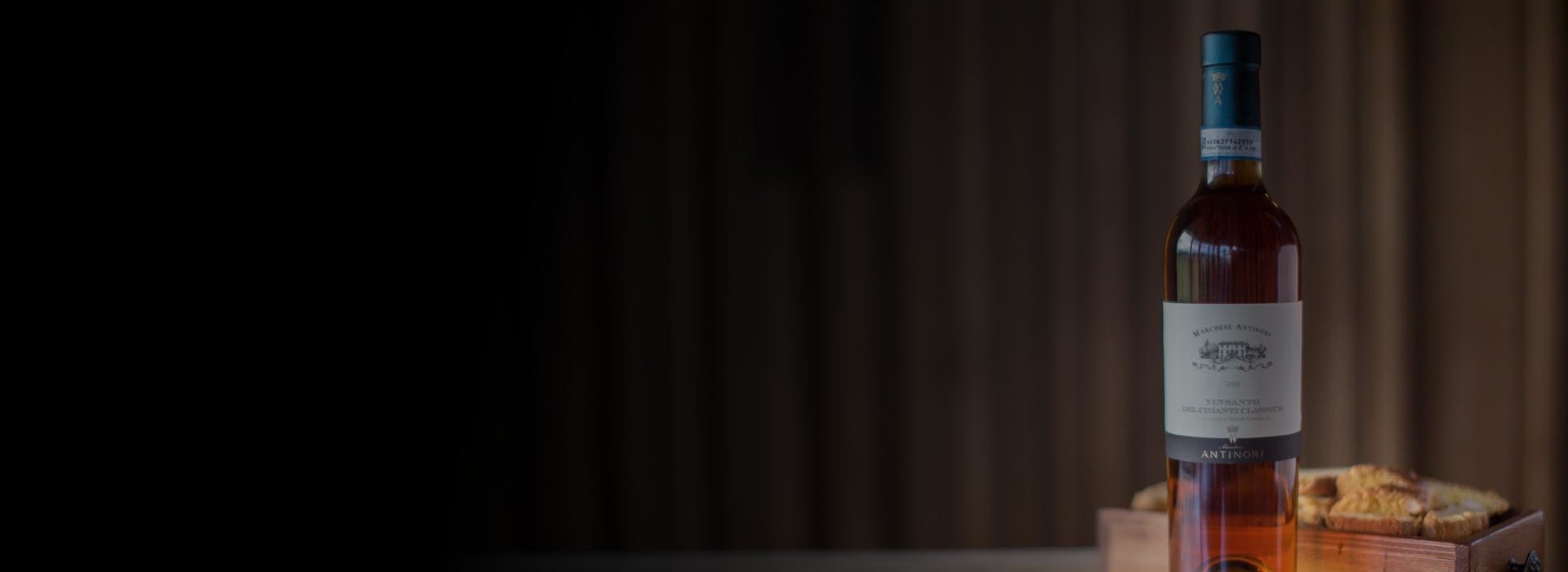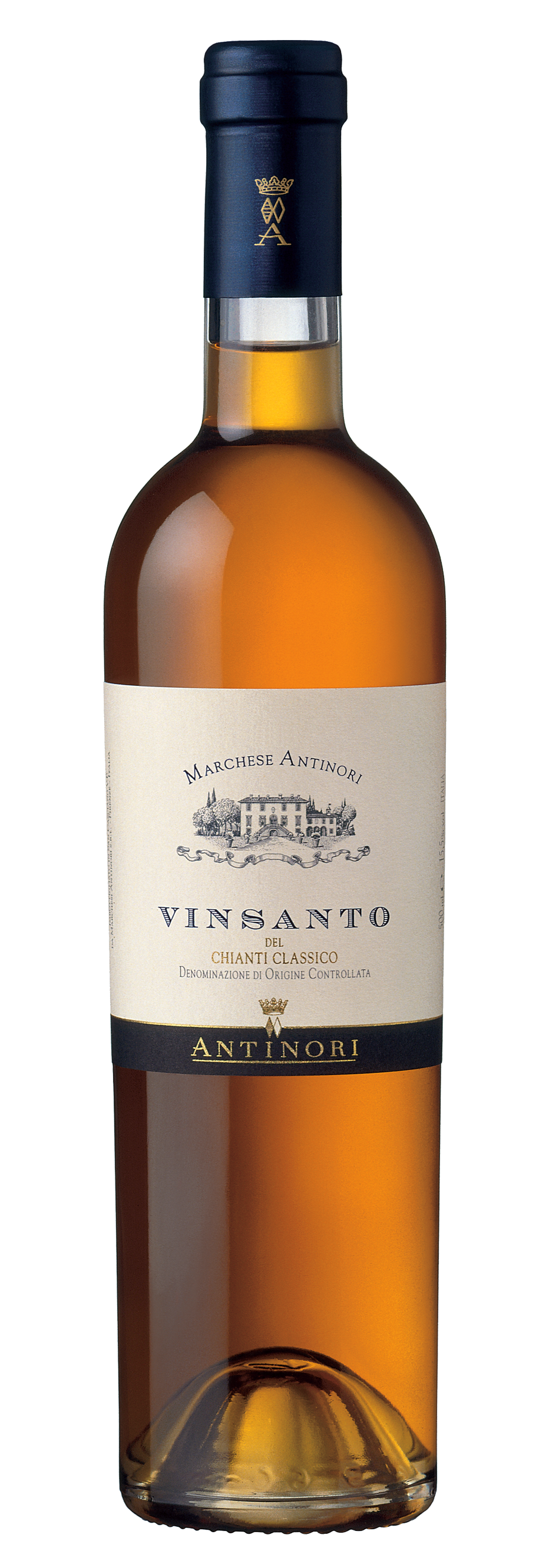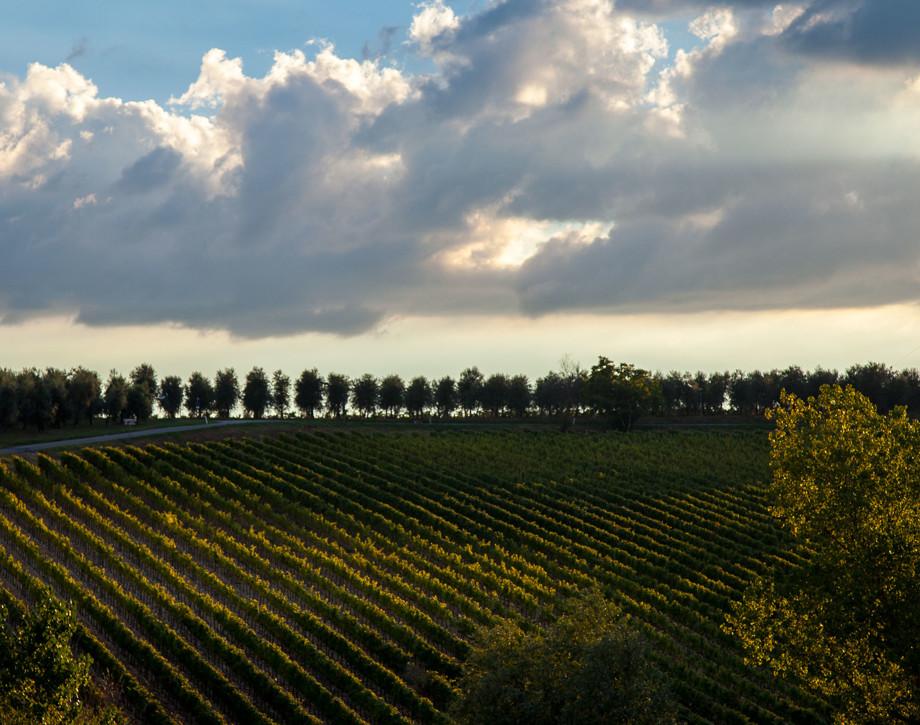Vinsanto Marchese Antinori

Climate
Climate trends in 2015 were perfectly normal and each season reflected Chianti Classico’s typical weather patterns. A cold, rather dry winter preceded springtime that saw wet weather in the months of March and April and dry conditions in May and June; throughout this period temperatures were normal and guaranteed a perfect growing season and ideal phases of flowering and fruit set. Summer was hot with a heat wave in July but with excellent temperature fluctuations between day and night that ensured even cluster growth and the absence of stress in the vineyards. Hot weather continued through the month of August with scattered showers that favored an excellent start to ripening phases. Trebbiano and Malvasia clusters were harvested between September 10th and 15th.
Fermentation and Aging
Grapes for Vinsanto were harvested exclusively from Antinori estate vineyards in the Chianti Classico region. Clusters were carefully selected in the vineyard and placed into small crates; in the cellar they were laid out manually on bamboo mats in the drying room at the Tignanello estate or hung in suspension in special movable frames at the Pèppoli estate. The grapes were left to desiccate until the end of December then were gently pressed to preserve their aromatic and organoleptic qualities. The must was introduced into small casks called caratelli, coopered with different types of wood in sizes varying from 50 to 200 liters and stored in “vinsantaia”, rooms exposed to seasonal temperature fluctuations. Alcoholic fermentation is a lengthy and slow process that primarily occurs in the spring and fall, while extreme temperatures in summer and winter cause fermentation to become dormant. Once the alcohol content is elevated enough, the fermentation process naturally comes to a halt. Vinsanto Marchese Antinori was left to age in the caratelli for about 3 years then blended and bottled.
Historical data
The production of Vinsanto in Tuscany goes all the way back to the Middle Ages and the wine is considered a true regional specialty; the Antinori family has always produced it. The first vintage of the Vinsanto Tenute Marchese Antinori (a “natural” Vinsanto, not a fortified wine with alcohol added) was the 1987.
Tasting notes
Vinsanto Marchese Antinori is deep amber in color with golden highlights. On the nose sweet notes of dried fruit, hazelnuts and dates, blend with intense sensations of candied orange, honey and a slight hint of cinnamon. The palate is full, supple, backed up by a pleasant freshness that makes it vibrant and pleasurable. Enjoyable persistence of flavors.
Awards
Wine Spectator 94/100 USA

Vinsanto
Vinsanto production in Tuscany and in the Chianti Classico region dates back to the Middle Ages. Observing traditional methods and strict production regulations, Vinsanto Tenute Marchese Antinori is produced from selected Trebbiano and Malvasia grapes that are left to dry in a completely natural process requiring time and patience. The resulting wine is intense and pleasing for its generous aromas and soft palate.

Climate
Climate trends in 2015 were perfectly normal and each season reflected Chianti Classico’s typical weather patterns. A cold, rather dry winter preceded springtime that saw wet weather in the months of March and April and dry conditions in May and June; throughout this period temperatures were normal and guaranteed a perfect growing season and ideal phases of flowering and fruit set. Summer was hot with a heat wave in July but with excellent temperature fluctuations between day and night that ensured even cluster growth and the absence of stress in the vineyards. Hot weather continued through the month of August with scattered showers that favored an excellent start to ripening phases. Trebbiano and Malvasia clusters were harvested between September 10th and 15th.
Fermentation and Aging
Grapes for Vinsanto were harvested exclusively from Antinori estate vineyards in the Chianti Classico region. Clusters were carefully selected in the vineyard and placed into small crates; in the cellar they were laid out manually on bamboo mats in the drying room at the Tignanello estate or hung in suspension in special movable frames at the Pèppoli estate. The grapes were left to desiccate until the end of December then were gently pressed to preserve their aromatic and organoleptic qualities. The must was introduced into small casks called caratelli, coopered with different types of wood in sizes varying from 50 to 200 liters and stored in “vinsantaia”, rooms exposed to seasonal temperature fluctuations. Alcoholic fermentation is a lengthy and slow process that primarily occurs in the spring and fall, while extreme temperatures in summer and winter cause fermentation to become dormant. Once the alcohol content is elevated enough, the fermentation process naturally comes to a halt. Vinsanto Marchese Antinori was left to age in the caratelli for about 3 years then blended and bottled.
Historical data
The production of Vinsanto in Tuscany goes all the way back to the Middle Ages and the wine is considered a true regional specialty; the Antinori family has always produced it. The first vintage of the Vinsanto Tenute Marchese Antinori (a “natural” Vinsanto, not a fortified wine with alcohol added) was the 1987.
Tasting notes
Vinsanto Marchese Antinori is deep amber in color with golden highlights. On the nose sweet notes of dried fruit, hazelnuts and dates, blend with intense sensations of candied orange, honey and a slight hint of cinnamon. The palate is full, supple, backed up by a pleasant freshness that makes it vibrant and pleasurable. Enjoyable persistence of flavors.
Awards
Wine Spectator 94/100 USA

The Specialties Of The Chianti Region
Chianti Classico is the heart of Tuscany not only from a geographical perspective but also due to its historical and cultural importance, its traditions and for its strikingly beautiful territory. Chianti Classico is home to Marchesi Antinori’s historic estates, a family of winemakers since 1385 who have always been passionate about their ancestral territory. The specialty products produced by Antinori, brandy, grappa, Vinsanto, extra virgin olive oil and vinegar, are all remarkable tributes to Chianti Classico’s rich, generous countryside and its authentic production perfected through centuries of agricultural and viticultural traditions.
















